Letters from Lodi
An insightful and objective look at viticulture and winemaking from the Lodi
Appellation and the growers and vintners behind these crafts. Told from the
perspective of multi-award winning wine journalist, Randy Caparoso.
What will the country be drinking in 2025?
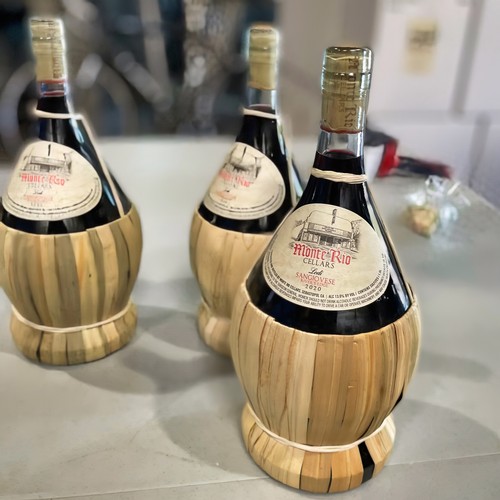
Modern day "jugs" aimed at meeting today's growing demand for handcraft, low intervention, sustainably grown wines: Premium quality, certified biodynamic farmed Lodi Sangiovese bottled in 1-liter fiascos (straw covered bottles).
January is usually the time when pundits in various facets of the industry (trade, retail, marketing, media, restaurants, etc.) take out their crystal balls and weigh in on the imminent direction of consumers. Even if you already know exactly what you'll be buying or selling, it's good to know what everyone else is up to.
Think about it. If you are a Boomer, you probably remember buying a lot of jug wine, and then later in life, wine coolers, $5.99 Chardonnays or White Zinfandels displayed along grocery store lines next to the candy bars and House & Garden or Sunset magazines. Presumably, you've moved on from those days, when dinosaurs walked the earth. If not, keep on truckin'.
Newer generations don't understand the same lingo. Then again, older ones probably have little idea what younger ones are saying or listening to. Unless, of course, you, too, are looking forward to Kendrick Lamar and SZA at the upcoming Super Bowl halftime show. It's no shame, though, if you had to Google these popular artists. Obvious point being, the generations have different tastes, as well they should.
So what will consumers in general be drinking over the upcoming year, or next few years? Taking a quick spin through the online chatter, I found the following tidbits.

Mediterranean grapes now very much a part of Lodi's wine culture: (from top-left, clockwise) Grenache blanc, Grenache noir, Piquepoul, Tempranillo, Cinsaut and Carignan.
Mediterranean varieties
It is interesting that in The Guardian (January 25, 2025), a wine scribe named David Williams made note of the fact that...
We’ll also see more wines made from Mediterranean varieties such as Grenache (a.k.a., Garnacha), Carignan, and Assyrtiko, which are valued in areas where the chief consequence of the climate crisis so far has been an excess of heat and an absence of water. In the same hot-climate regions, wines made from coastal, island, and high-altitude sites, where growers are able to moderate the heat with the cool of sea and mountain breezes, will also continue their ascent.
This is almost ironic, since Grenache and Carignan are considered "everyday" heritage grapes in Lodi, along with cultivars such as Zinfandel and Cinsaut. Recently, the Greek grape Assyrtiko has become a thing in Lodi, and of course, Albariño and Tempranillo have been major Lodi varietals for going on 25 years. If anything, the Lodi experience is simple proof that there is life beyond Cabernet and Chardonnay. It's already happening in Lodi, of course, because the region is naturally endowed with a Mediterranean climate, which climate scientists believe will remain consistent for the region (while other regions get hotter), at least over the next 50 years (see our recent post on How global warming is changing winegrowing in Lodi and the rest of the world).
Whodathunk Lodi as an American trendsetter? That's because we are!
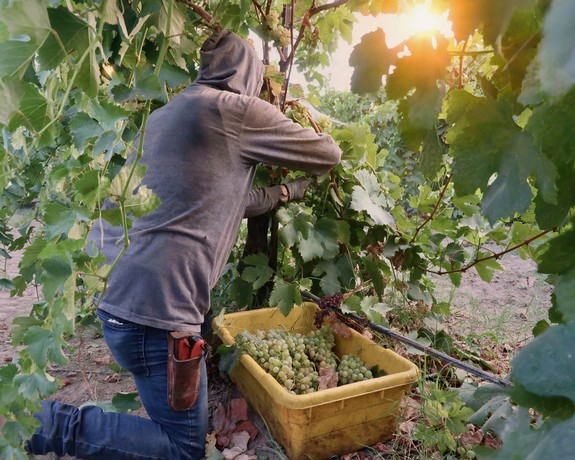
Clements Hills-Lodi Assyrtiko harvest in the Perlegos family's Thera Vineyard.
Decline of "cheap wine"
Online wine journalists such as Jason Wilson of The New Wine Review are beginning to parse the market research demonstrating, strangely enough, that younger consumers (i.e., Generation Z and Millennials under 35) are drinking less wine by volume, yet insist on spending more per bottle⏤circumstances much of the wine production industry is still trying to wrap its head around. Writes Wilson in a December 30, 2024 post...
The idea of cheap, bulk wine as “starter wine” is a myth, and it’s likely a prime reason why younger people aren’t drawn to wine in general. The American wine companies have become so reliant on branded cheap bulk wine that it’s dragging down the whole industry.
Study after study shows that young people are drinking less but spending more. Several show that Millennials already spend more on wine, per bottle, than Boomers do. But industry largely scoffs at natural wine, despite its popularity among younger drinkers. It’s ignored the fact that younger drinkers want fewer additives, more sustainable practices, ethical production, and transparency. Will the American wine industry pull out of this spiral? I don’t think they’re capable of it, and there will be tough times ahead.
Fact of the matter is, many wineries have recently been refusing grapes grown for the lower priced market, explaining why so many vineyards in Lodi have gone unpicked over the past two years. Yes, there is a growing number of handcraft, natural style vintners now sourcing grapes from Lodi, particularly for their dollar value and diversity, but these producers still represent a negligible percent of buyers. Think of Napa Valley in the 1960s, when a similar negligible percent of wineries (at that time, dismissed as "boutique" brands) were producing wines which, within a few short years, began making a huge impact on the emerging prestige and direction of Napa Valley specifically, and California wine in general. All big things start off small.
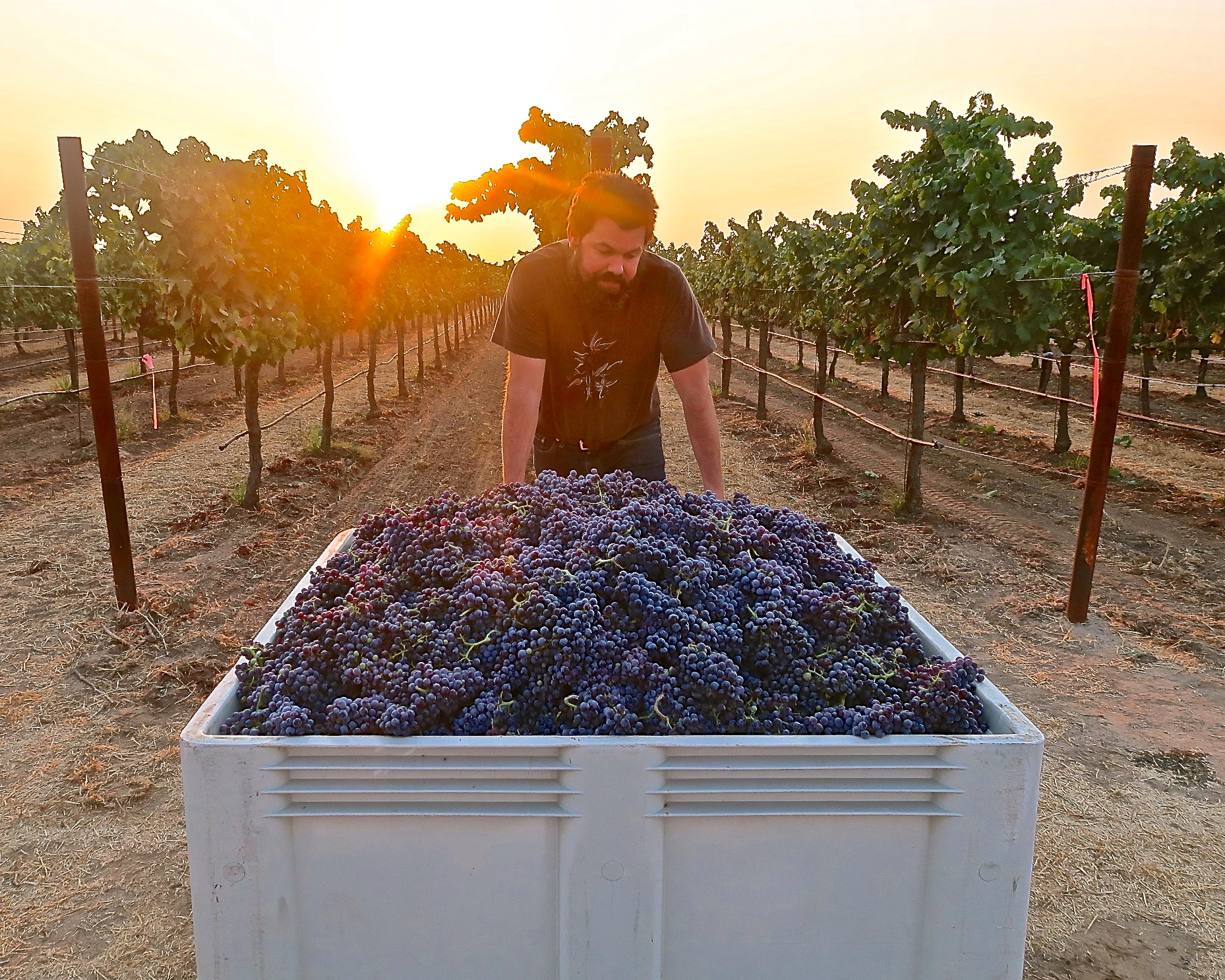
John Lockwood, owner/winemaker of Napa Valley's Enfield Wine Co., with Lodi Grenache harvested in Abba Vineyard—part of the still neglible percent of small, handcraft vintners attracted to Lodi for its diversity of high quality, well priced fruit.
Times have changed, and there are now numerous other American wine regions (besides Lodi) producing distinctive premium quality wines. For all the regions, the overall wine market is changing as we speak, and consumers, as usual, will be calling the shots—probably dragging along a lot of people (the wine industry, trade, media, etc.) kicking and screaming.
Is wine being over-simplified?
In response to declining per capita wine consumption, over the past year much of the talk within the industry has been about "simplifying" wine messages. More than a few marketers have been warning that, in order to communicate with young consumers, wine has to be "demystified," and traditional "wine language" put out to pasture. Some are saying that selling wine by talking about how it is made or grown no longer works, and if anything, wine now must be sold by expressing "feelings" rather than intellectual ideas.
The New Wine Review's Wilson, however, begs to differ, saying...
The impulse to demystify wine seems more and more like a fool’s errand, and one that results in middling, repetitive content. Wine’s complexity will always be part of its appeal. Wine is as vast and surprising as the world itself. Hopefully, we can remember that once in a while... Perhaps in 2025, the time is right to “re-mystify” wine—in the best way possible.

Among the growing number of young wine lovers flocking to Lodi because of its unusual diversity of authentic premium wines.
As we've been recently saying (see Sobering thoughts at the start of 2025), there is a reason why the American wine industry has grown from an $80 to over $100 billion business over the past five years (the most by far compared to other wine producing countries), notwithstanding the recent dip in per capita consumption. Many wine professionals would bet that it's not because wine appreciation has been dumbed down, but rather the opposite—wine has always enjoyed a unique appeal that stimulates the intellect and fascinates consumers of all ages. Wine, in other words, feeds the brain as much as the body, and it does that better than any other alcoholic beverage known to humankind. It would be daft to take run away from that basic appeal.
$30 is the new $20
On the Fine Dining Lovers page (January 12, 2025), Ethan Fixell parses the impact of inflation on buying habits, writing...
Inflation is that annoying friend who always shows up uninvited and eats all your snacks. And the wine industry is just as susceptible to its presence.
Fortunately, while wine prices are being driven higher in general, American wine drinkers are becoming more discerning. Younger generations, in particular, tend to pay more attention to what they put in their bodies (unlike me, who once voluntarily ate a gas station hot dog). Which means the appeal of that $7 bottle... is fading fast.
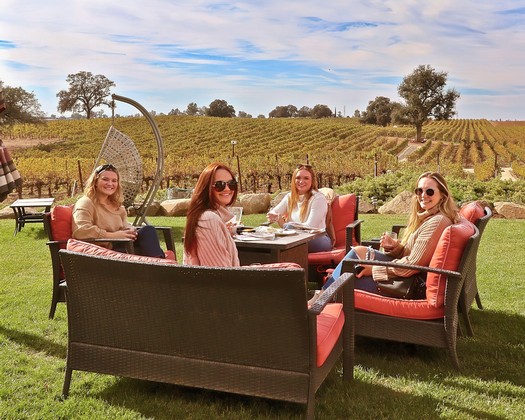
Younger generation wine lovers at Bokisch Vineyards—one of several Lodi grower/producers which has recently shifted from focus on $12-$18 value priced wines to even higher quality $30-$48 wines with a growing presence in today's shifting wine market.
On the flip side, the $30 bottle is having a moment, as Gen Z and Millennials provide support for the price point. You can still find incredible value in the $25-$35 range, with wines that are lovingly crafted and bursting with complexity and flavor—and younger folks are willing to pay for it. So, while inflation might sting a bit, it's also pushing us towards a world of better wine.
Before you start hoarding cases of Josh in your underground bunker, let me be clear: There will be no wine apocalypse this year. But there are a few factors that suggest an imminent dip in consumption.
Inflation, adds the metaphor-fixated Fixell, is being exacerbated by climate change, which to him is like...
The dude who smashes a lamp and starts an electrical fire that's quickly engulfing the house. With unpredictable weather patterns and rising temperatures, winemakers are being forced to adapt⏤and that means experimenting with grape varieties that were previously unthinkable in certain regions. Expect to see Albariño, a grape typically associated with the cool, coastal regions of Spain, thriving in the warmer climes... leading to some exciting new wines.
Sustainability, sustainability, sustainability
While in recent years Lodi winegrowers have been hard hit by market changes, they can at least take solace in the fact that they have been well ahead of most of the industry around the world in the area today's market pundits cannot stop talking about: Sustainability (e.g., LODI RULES for Sustainable Winegrowing).
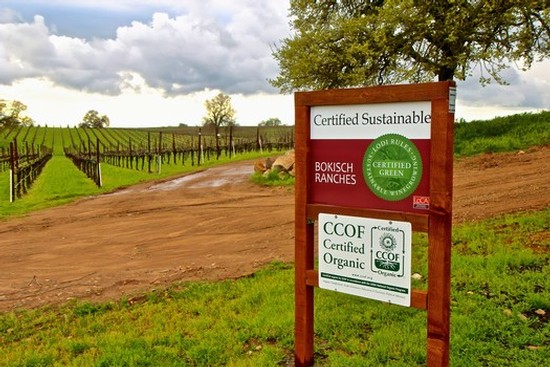
Seen in both vineyards and on wine bottles because of its increasing importance to consumers: The "Certified Green" sign for Lodi's industry leading sustainable winegrowing in Bokisch Ranches, which also meets growing market needs by being certified organic.
In Hearst Bay Area (January 3, 2025), Russ Shumaker writes...
Sustainability isn't just a buzzword—it's a necessity. Consumers, particularly younger generations, actively seek brands that prioritize eco-friendly practices. Highlighting initiatives such as organic farming, recyclable packaging, and reducing carbon footprints can significantly enhance brand reputation and loyalty.
Beyond consumer demand, sustainability aligns with the wine industry's long-term interests, as climate change directly affects grape production and harvest quality. Investing in water conservation technologies, solar-powered wineries, and biodynamic farming methods demonstrates environmental responsibility and reduces operational costs over time.
Sharing these efforts transparently through marketing campaigns and product labeling creates an authentic connection with environmentally conscious consumers, positioning your brand as a forward-thinking leader in the market. Sustainability isn't just about meeting consumer expectations—it's about future-proofing your business and contributing to a healthier planet.
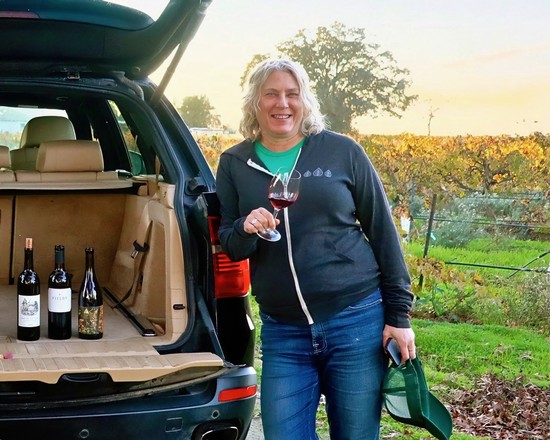
The widely published wine and travel correspondent Betsy Andrews, tasting contemporary style, handcraft wines in one of Lodi's Historic Vineyard Society certified blocks (Stampede vineyard in the Clements Hills-Lodi AVA).
Political impact on economy and climate change
In SevenFifty Daily (January 6, 2025), longtime wine and travel correspondent Betsy Andrews talks about "5 Wine Industry Trends to Watch in 2025," positing the challenge of "changing consumer preferences" as "opportunities" for the industry. Two of her more thought-provoking points...
The effects of the second Trump Term will be profound. With Donald Trump’s reelection, tariffs loom. First will come a rush on imports. “There should be containers coming now from Europe to hit landfall before Inauguration Day and get wines in at a lower price,” says Brian Rosen, the founder and managing partner of the private equity firm InvestBev. If tariffs are enacted, the EU will likely retaliate with its own levies, causing an export slump for American wines. Rosen projects a 13 to 16 percent dip in imports and a larger decrease of 18 to 22 percent in exports.
Though tariffs are designed to boost American-made products at home, “It’s likely sales will fall as capital costs increase for U.S. producers,” says Caroline Clark, the director of beverage and hospitality at Colorado’s Id Est [a "visionary hospitality group"]... “People have been less inclined to drink things over $100 already,” says Adrienne Vanni, the beverage director of New York City’s Lola’s. “With tariffs, that will really be the case. Lots of wines will be priced out.”
Climate change will accelerate its impact, and producers will accelerate their response. Wineries and buyers are going into 2025 on the heels of a year that saw catastrophic flooding in Spanish wine regions and an unprecedented hurricane in Asheville, North Carolina, where Plēb Urban Winery was devastated. “Rising temperatures and unpredictable weather patterns are already impacting the 2025 vintage,” says Schmid. “Smaller producers, especially, face increasing challenges in adapting. Collaborative sustainability efforts and consumer education will be key to navigating these issues effectively.”

Visiting sommeliers from across the country at Lodi's Mettler Family Vineyards.
The gatekeepers' plan for 2025
While on-premise (i.e., restaurant and hotels) sales is just one of the wine industry's key segments, it is always a bellwether. Consumers, after all, will always love to dine out and stay in hotels, through good times and bad. Sommeliers and on-premise wine managers are still considered "gatekeepers," having an outsized impact on the constantly evolving tastes of wine consumers.
In the Beverage Trade Network's page on Sommelier Business (January 3, 2025), on-premise wine professionals are advised on "Key Trends Shaping the Wine Industry for Sommeliers in 2025." They make 10 points pertaining to upcoming trends that, in fact, are applicable to all facets of the wine industry (from grape growing to production, marketing and sales). The things they say everyone should be cognizant of...
1. White Wine Takes Center Stage. White wine’s popularity is soaring, surpassing red wine in global consumption... Sommeliers should prioritize diverse white wine selections, from zesty Albariños to rich Viogniers.
2. Rising Demand for Mindful Knowledge about Eco-friendly Wines. Consumers increasingly seek wines that reflect sustainable and ethical practices. Organic, biodynamic, and vegan certifications carry significant weight. Highlight these wines on your list and share their stories to appeal to environmentally conscious guests.
3. Embrace of Low-Intervention Wines. Natural and low-intervention wines continue to captivate adventurous drinkers. These wines prioritize minimal additives and a sense of terroir, appealing to those who value authenticity.
4. Expansion of No and Low Alcohol Wines. It now seems unavoidable. The no- and low-alcohol categories are not a passing fad but a structural shift in drinking habits.
5. Revival of Native Grapes. Indigenous grape varieties are making a comeback as consumers look for unique and authentic experiences. Introducing lesser-known options like Romania’s Fetească Neagră or Italy’s Falanghina can differentiate your list and surprise guests seeking adventure.
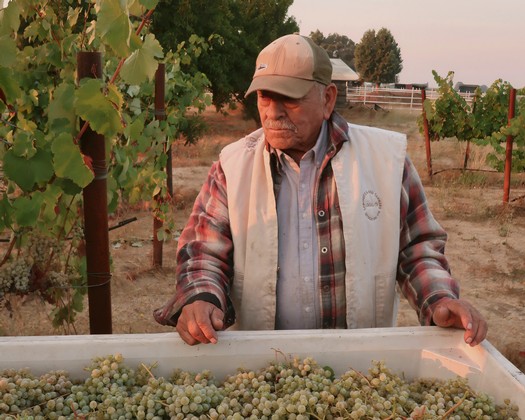
Fernow Ranch harvest of Fiano, an ancient cultivar of Campania, Italy—one of over 100 varieties now commercially grown in the Lodi appellation, taking advantage of the region's exceptionally grape-friendly Mediterranean climate.
6. Return to Classic Regions. In times of economic uncertainty, consumers gravitate toward familiar names. Bordeaux, Burgundy, and Napa Valley remain staples on premium lists. Ensure these classics are well-represented to satisfy guests looking for reliability and prestige.
7. Shift to Premium Price Points. Entry-level wines are being redefined, with $30 at retail now a standard starting price for quality bottles. Invest in mid-tier and premium wines that deliver exceptional value... Guests are willing to spend more for wines that meet their expectations for quality and experience.
8. The Power of Brand Recognition. Brand loyalty is growing in categories like Champagne and Provence Rosé, where iconic names dominate. Balance your list by offering trusted brands alongside artisanal producers...
9. Storytelling Matters More Than Ever. Alongside known brands, many guests are increasingly interested in the story behind their wine. This means small, lesser-known, and artisan winemakers. Whether it’s a family-owned vineyard, a unique production method, or sustainable practices, these narratives enhance the dining experience.
10. Re-Mystification of Wine. The trend toward simplifying wine may be reaching its limit. Consumers appreciate wine’s complexity and the expertise that sommeliers bring to the table. Embrace the opportunity to educate and inspire guests with curated pairings and deeper insights into the wines you serve, but don’t be overly technical or pedantic in your discussions.
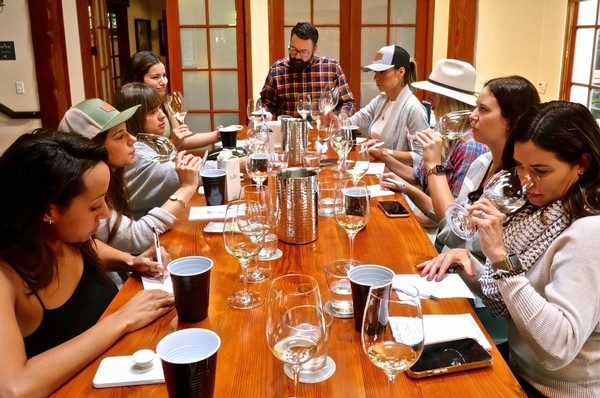
Visiting wine influencers—among the most important "story tellers" in the industry today—tasting Lodi wines alongside comparable European wines in the Lodi Wine Visitor Center.